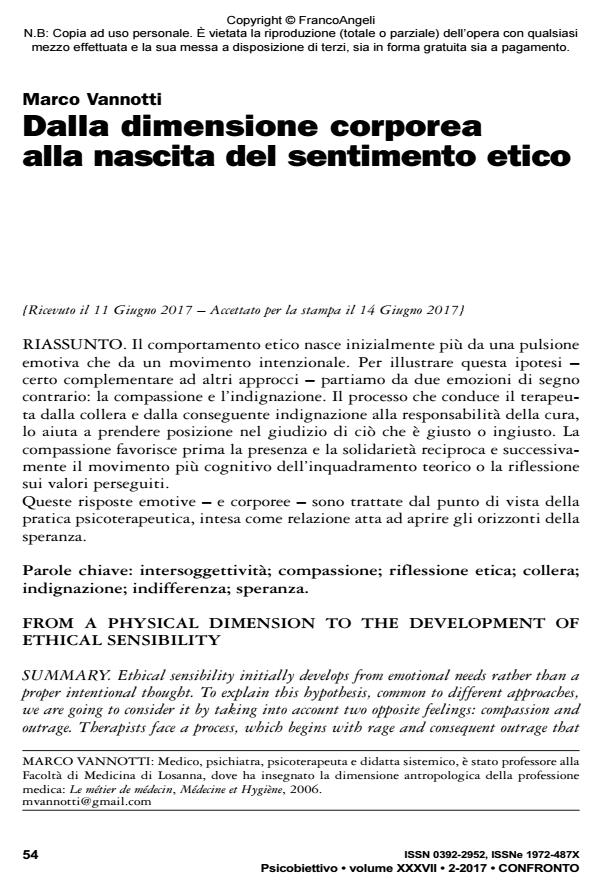From a physical dimension to the development of ethical sensibility
Journal title PSICOBIETTIVO
Author/s Marco Vannotti
Publishing Year 2017 Issue 2017/2
Language Italian Pages 19 P. 54-72 File size 130 KB
DOI 10.3280/PSOB2017-002004
DOI is like a bar code for intellectual property: to have more infomation
click here
Below, you can see the article first page
If you want to buy this article in PDF format, you can do it, following the instructions to buy download credits

FrancoAngeli is member of Publishers International Linking Association, Inc (PILA), a not-for-profit association which run the CrossRef service enabling links to and from online scholarly content.
Ethical sensibility initially develops from emotional needs rather than a proper intentional thought. To explain this hypothesis, common to different approaches, we are going to consider it by taking into account two opposite feelings: compassion and outrage. Therapists face a process, which begins with rage and consequent outrage that leads them to the healing process; this process helps them to take a position on knowledge of what is right or wrong. Compassion favors presence and mutual solidarity at first, but subsequently, it contributes to developing a more cognitive process of theoretical organization or rational meditation of desirable values. These emotional and physical responses are observed from psychotherapeutic practice, seen as a relationship, which aims to open up to the idea of hope.
Keywords: Intersubjectivity; Compassion; Ethical Meditation; Rage; Outrage; Indifference; Hope.
Marco Vannotti, Dalla dimensione corporea alla nascita del sentimento etico in "PSICOBIETTIVO" 2/2017, pp 54-72, DOI: 10.3280/PSOB2017-002004